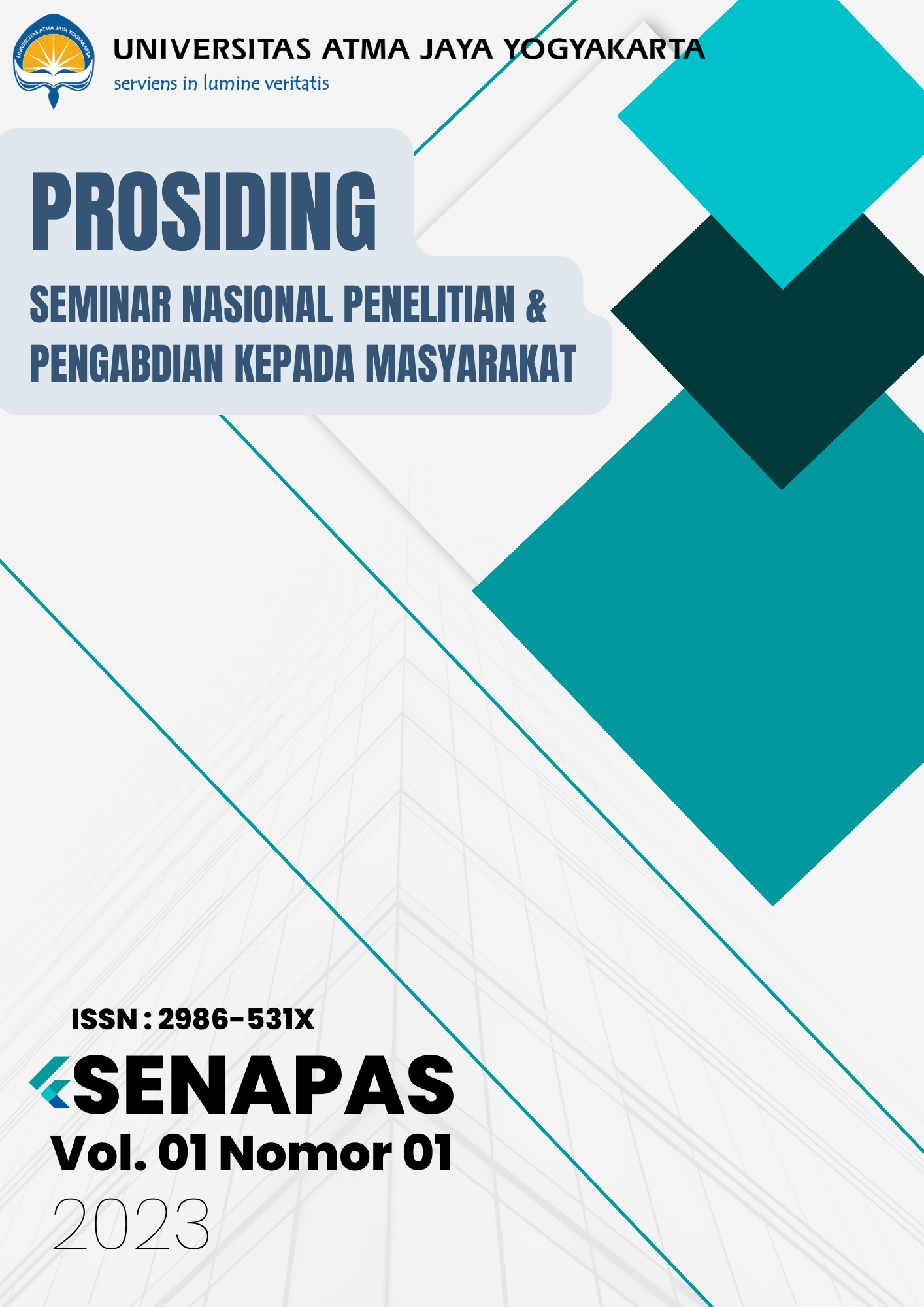Simulasi dan Pelatihan Tanggap Bencana Gempa Bumi dan Kebakaran di SD Budi Utama Yogyakarta
DOI:
https://doi.org/10.24002/senapas.v1i1.7338Keywords:
simulasi, pelatihan, gempa bumi, mitigasi bencanaAbstract
The community service was carried out at one of the educational institutions, Budi Utama Elementary School, which has around 500 students. Elementary school students need to understand basic rescue procedures when a disaster occurs. Community service was prioritized in the simulation and training of disaster responses, especially for earthquakes and fires. Earthquakes were one of the focus because this school was located in Yogyakarta, which was prone to this type of natural disaster. The fire was another focus because it usually occurs as a follow-up incident after the earthquake. The simulation and training on earthquakes and fires involved the Badan Penanggulangan Bencana Daerah (BPBD) DIY and UPT Damkar Sleman. The Budi Utama Elementary School community successfully carried out the rescue procedures based on the earthquake simulation. The training on firefighting showed success, too. The Budi Utama Elementary School community has successfully conducted disaster response simulations and training. The impact of these simulations and training was that the Budi Utama Elementary School community became aware of how to respond to a disaster.
References
Google Earth, „SD Budi Utama Kutu Dukuh Sinduadi, Kec. Mlati, Kabupaten Sleman, Daerah Istimewa Yogyakarta 55284,“ 2021. [Online]. Available: https://www.google.com/maps/search/sd+budi+utama/@-7.7667286,110.3619988,259m/data=!3m1!1e3. [Zugriff am 31 Oktober 2022].
R. Zulvira, N. Neviyarni und I. Irdamurni, „Karakteristik Siswa Kelas Rendah Sekolah Dasar,“ Jurnal Pendidikan Tambusai, Bd. 5, Nr. 1, pp. 1846-1851, 2021.
Sekretariat Negara RI, UU No. 24 tahun 2007 tentang Penanggulangan Bencana, Jakarta: Biro Peraturan Perundang-undangan Bidang Politik dan Kesejahteraan Rakyat, 2007.
J. S. Siregar und A. Wibowo, „Upaya Pengurangan Risiko Bencana pada Kelompok Rentan,“ Jurnal Dialog dan Penanggulangan Bencana, Bd. 10, Nr. 1, pp. 30-38, 2019.
R. D. Suciati, A. J. Mahardhani und D. Kristiana, „Mitigasi Bencana untuk Menumbuhkan Karakter Peduli Lingkungan pada Anak Usia Dini,“ Jurnal Dimensi Pendidikan dan Pembelajaran, Bd. 10, Nr. 2, pp. 12-18, 2022.
R. D. Arisona, „Sosialisasi dan Simulasi Mitigasi Bencana Gempa Bumi dalam Meningkatkan Kesiapsiagaan Siswa SDN 2 Water Ponorogo.,“ ASANKA: Journal of Social Science and Education, Bd. 1, Nr. 1, pp. 1-7, 2020.
B. Hayudityas, „Pentingnya Penerapan Pendidikan Mitigasi Bencana di Sekolah untuk Mengetahui Kesiapsiagaan Peserta Didik,“ Jurnal Edukasi Nonformal, Bd. 1, Nr. 1, pp. 94-102, 2020.
D. Yulistiya und Y. Yuniawatika, „Sosialisasi Tanggap Bencana Gempa Bumi untuk Anak Sekolah Dasar,“ Abdimas Pedagogi: Jurnal Ilmiah Pengabdian kepada Masyarakat, Bd. 5, Nr. 2, pp. 65-71, 2022.
BPBD Kabupaten Sleman, „Dokumen Kajian Risiko Bencana Kabupaten Sleman Tahun 2021,“ Maret 2022. [Online]. Available: https://bpbd.slemankab.go.id/wp-content/uploads/2022/03/FIX-Dokumen-Kajian-Risiko-Bencana-Kabupaten-Sleman-2021-2025.pdf. [Zugriff am 31 Oktober 2022].
Badan Standardisasi Nasional, Tata Cara Perencanaan Ketahanan Gempa untuk Struktur Bangunan Gedung dan Non-Gedung (SNI 1726:2019), Jakarta: BSN, 2019.
Downloads
Published
Issue
Section
License
Copyright (c) 2023 Agustina Kiky Anggraini, Henda Febrian Egatama, William Wijaya

This work is licensed under a Creative Commons Attribution-ShareAlike 4.0 International License.









